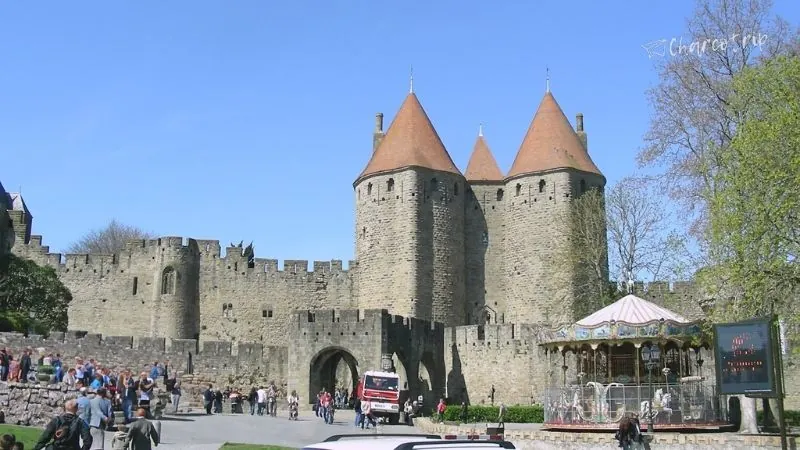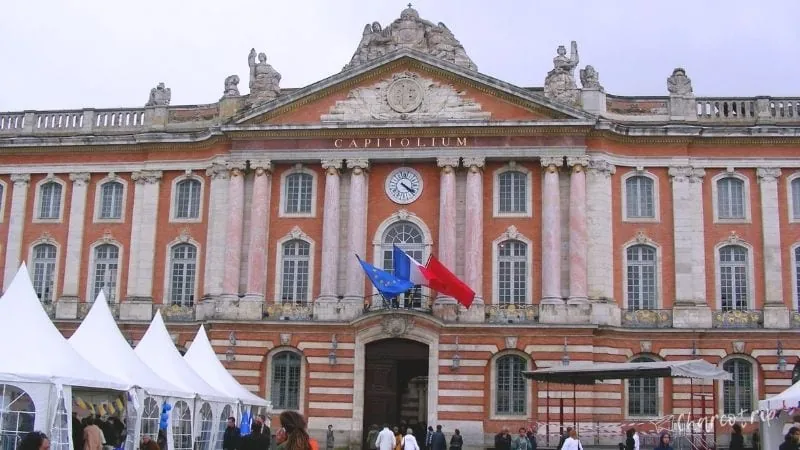Let’s discover the Roman city of Lugdunum, visiting the Roman Theater and Odéon in Lyon. We’ll go to its enormous Museum as well.
On this occasion we are not going to visit Lyon, but Lugdunum, that Roman city that existed many centuries ago, of which many vestiges can be seen today. These help us imagine what life was like under the Empire, we will start the visit with the Roman Theater, passing through the Odeon, ending at the Museum, seeing pieces that were eyewitnesses of the transformation from Lugdunum to Lyon.
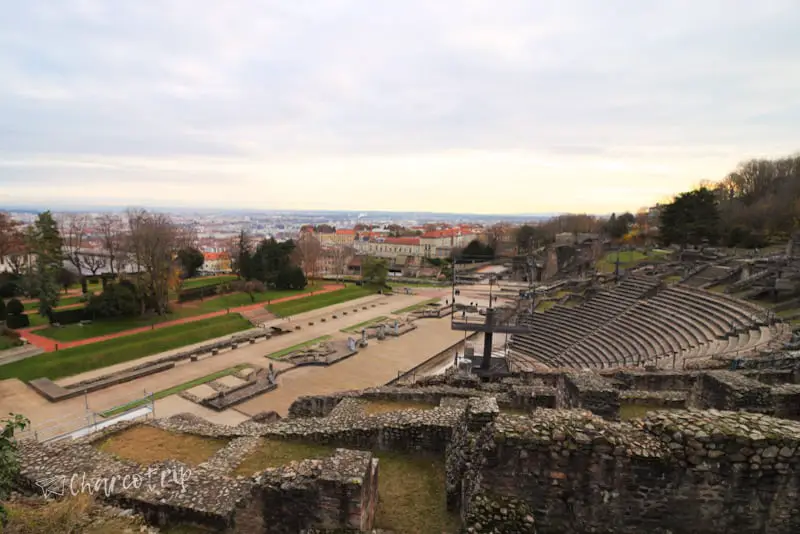
Information to visit the Roman Theater of Lyon and the Odeon
How much is it?
The best price FREE
Which are the schedules?
Every day from 7 AM – 7 PM
Can you take photos?
Yes
Get your flight to France at the best price
How to get there?
Just as we explained how to get to the Basilica of Fourvière, the process is the same, you just have to walk a little more. When leaving the funicular station and seeing the Basilica in front of you, turn right and the place will be seen shortly.
History, Theater and Roman Odeon of Lyon
The Roman Theater of Lyon, also known as “the great theater”, to differentiate it from the Odeon, was built during the beginning of the Roman Empire, around the year 15 BC, at the time of Emperor Augustus. Like the Roman Theater of Orange (es), this was built taking advantage of the slope of the hill. In its beginnings it could receive about 5000 spectators, but over time they doubled its capacity. The shows presented were of the same type as in other theaters of its caliber: comedies, dances, plays, etc.
Right next to the huge theater we can see a miniature version, which is known as Odeon, that was built later, at the end of the 1st century after Christ. This small theater was reserved for musical performances and declamations. The Odeon were rare in this area of the Roman Empire, in the entire Gallic territory it can only be seen in three places: Lyon, Vienne and Valence. Only about 3,000 spectators could fit in it.
The theater and the odeon suffered great deterioration and practically disappeared from the landscape. It was not until the beginning of the 20th century that the necessary reconstruction work was carried out so that we can enjoy them today.

Let’s see it
By placing ourselves in the highest part of the theater, we can see the landscape and it is difficult to imagine that in his younger days that was impossible since there was a wall about 30 meters high. In this theater, as happened in Arles, its materials were most likely stolen to make other constructions. The truth is that there is very little left of the theater stage 🙂
The opposite occurs with the odeon, where we can see the colorful marble at the foot of the steps.

After spending some time looking at the two buildings, we headed to the Lugdunum Museum… You don’t have to walk far, it’s right next door.
Lugdunum Museum
Information to visit the Lugdunum Museum Museum
How much is it?
The price is 7 euros. But if you have your Lyon City Card it is free as it is included in the list of sites. And if you come the first Sunday of the month it’s FREE for everyone
Which are the schedules?
- From Tuesday to Friday: 11 AM – 6 PM
- Saturday and Sunday: 10 AM – 6 PM
Can you take photos?
Yes
Visiting the Museum
The museum was inaugurated in 1975 and at the beginning of the visit we have to go down through the rooms… sounds strange, doesn’t it? a little 🙂 the thing is that the building is buried, so to speak, and it was done so in order for the building not to disturb the environment and to avoid “offending fellow Romans”. The architect in charge of building it, Bernard Zehrfuss, had the firm idea that the theater and the odeon would continue to be the main protagonists of the place. And boy has he succeeded.

Mosaics
In the museum we can see a great diversity of elements that were part of the life of the Romans of Lugdunum, but I want to highlight the mosaics, in this place we can see many and they surprised us every time we went down the stairs one floor we could see a large mosaic . Seeing it like this from above is great since you can see it practically in its entirety.
Here I show you the mosaic of Bacchus (or Dionysus), the God of wine, in this mosaic they show the trip he made to India, managing to conquer it with his army and his divine powers. It dates approximately between the 2nd – 3rd centuries of our era.

Another mosaic that we could see was the one dedicated to the fight between Eros and Pan, yes, that same Pan that we saw harassing Aphrodite in the National Archaeological Museum in Athens (es). Keep in mind that the Romans and the Greeks had many deities in common, they only changed their names and sometimes not even that, as we could see in the Orange History and Art Museum (es).
In this mosaic Eros, the God of love, has wings and is about to attack Pan, who we can easily recognize with his horns and goat legs. We can also see Hermès on the left of the scene and Silène, who in turn is a friend of Bacchus. In the end everyone knows each other XD
At the end of the fight Eros is the one who wins, this to symbolize that love is stronger than the bestial desire of Pan, who is known for harassing nymphs and young boys, as we had seen in Athens, the very rascal.

There were so many mosaics that some were on the normal floor, that is, we could step on them. I couldn’t believe it, but yes. We were also able to see other smaller mosaics but with a lot of detail, such as one that represents Bacchus:
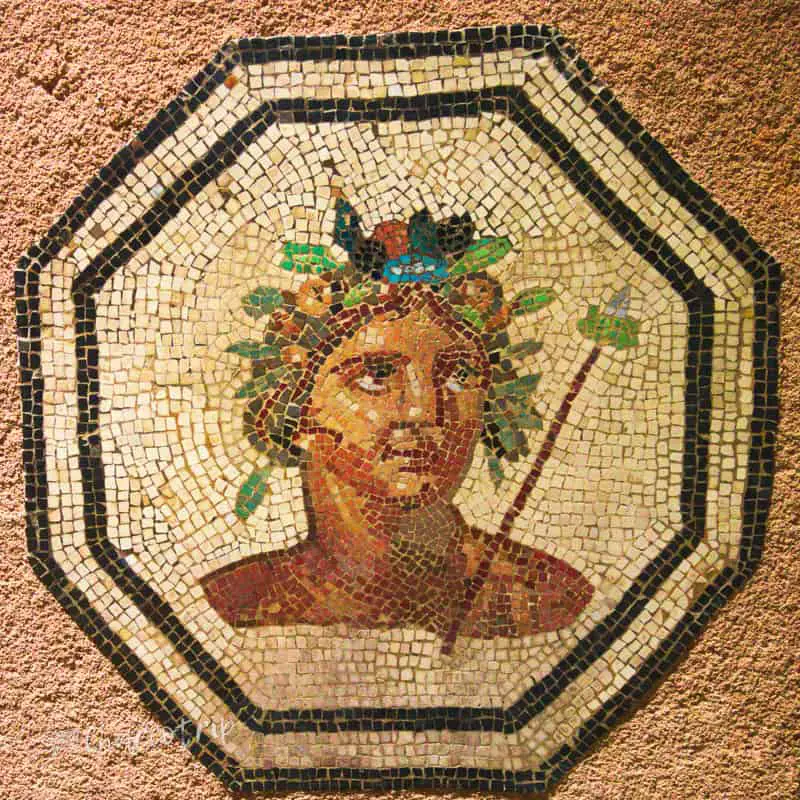
And this other one, dedicated to fish:
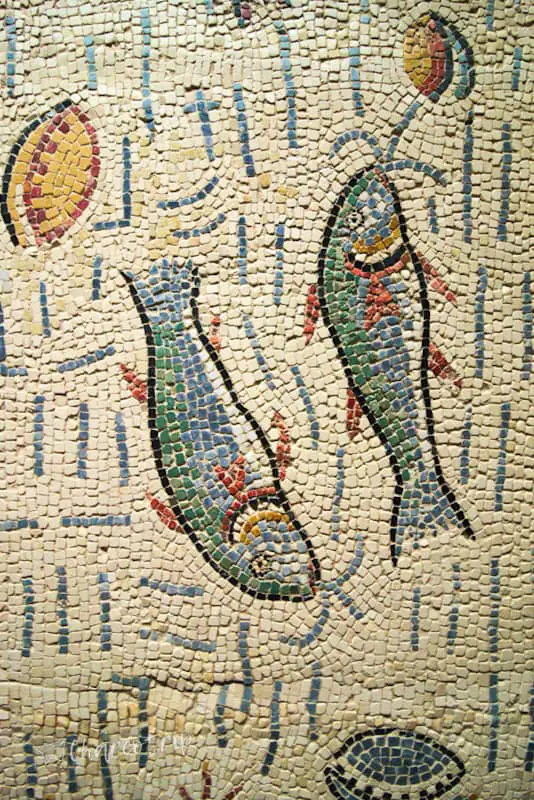
Funerary elements
In the museum we could see several sarcophagi, statues and inscriptions, which opened the door to understand a little more about how funeral rites were carried out in the times of Lugdunum. For example, we saw this very detailed sculpted sarcophagus. It represented the Triumph of Bacchus, carved in marble:

This other sarcophagus shows a different style, in which inscriptions were made:

We could also see several funerary masks. They were placed on the walls of the spaces surrounding the tombs, or on the funerary monuments themselves. For example, in the mask on the left, you can see how they are inspired by those used for the theater:
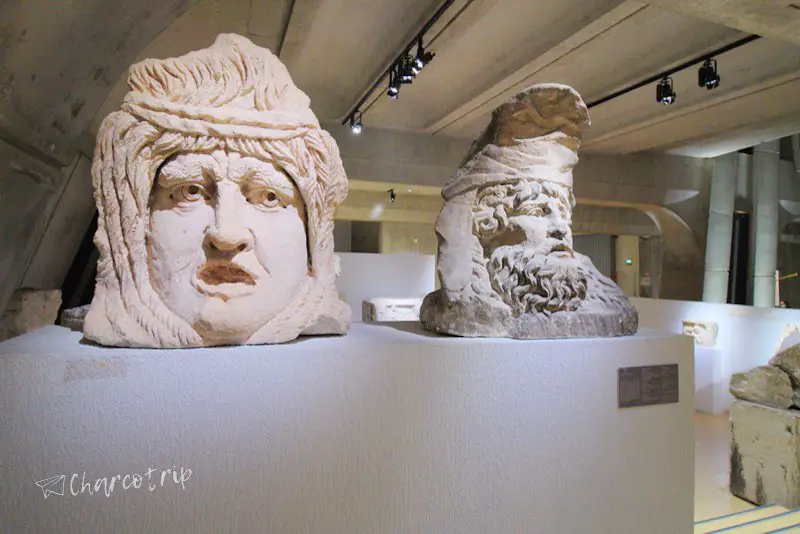
The view towards the Roman Theater
From the theater we could already see that two windows appeared among the green landscape that hides the museum, well being inside the museum we can see the view they produce. It is a very good view of the theater, to be able to observe it calmly in case the weather is not very good (so we are not out in the open)
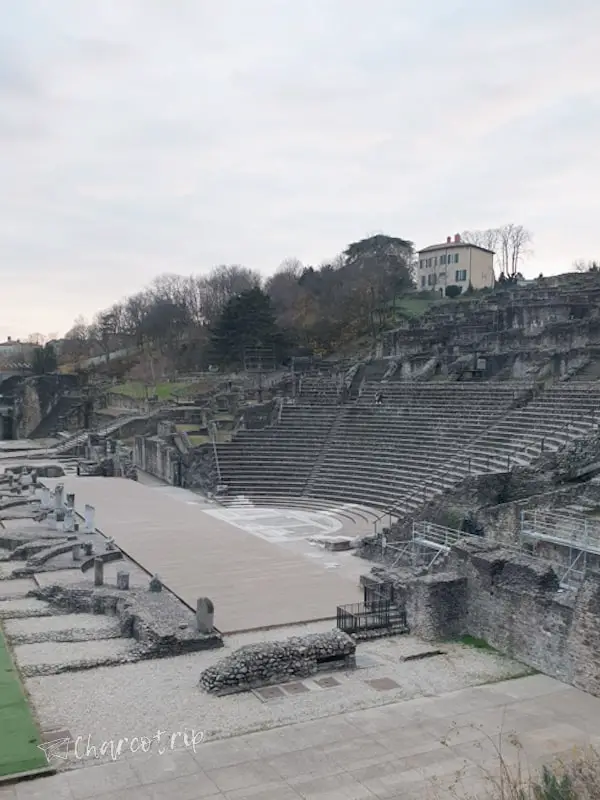
The bad luck of Lugdunum
We finish the visit on the lowest floor, that is, at the level of the theater stage. Before leaving, we can see a temporary exhibition that tells us about when Emperor Commodus died without leaving a successor. That unleashes a series of events and several candidates seek power, the cities had to support a possible successor.
Apparently Ludgunum supported the wrong candidate, who was defeated and the winner who was the emperor Lucius Septimius Severus took revenge against the city… later we would see that during the course of history Lyon has been unlucky when it comes to choosing sides.
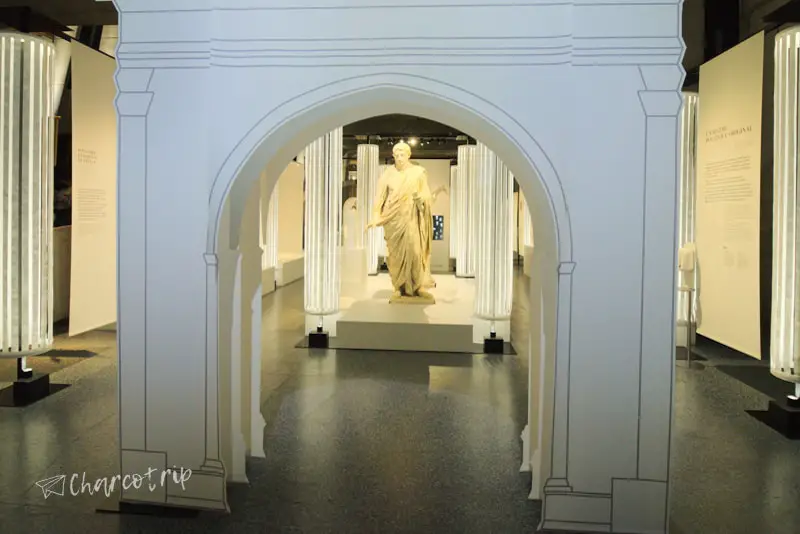
Do we recommend the visit?
If you are a fan of Roman monuments, surely there is not much to say. But even if you are just curious about the historical monuments, coming to see the Roman Theater during your visit to Lyon is highly recommended.
And the Lugdunum Museum is very pleasant to visit and has many pieces that help to decipher the Roman puzzle, so if you have the opportunity, do not leave the Fourvière hill without having visited it.
Some of the links in this article include affiliate links. This means that if you buy a product listed here by following these links, we'll receive a commission. The use of this link does not increase the final price for you and thus helps us to keep our blog alive.

